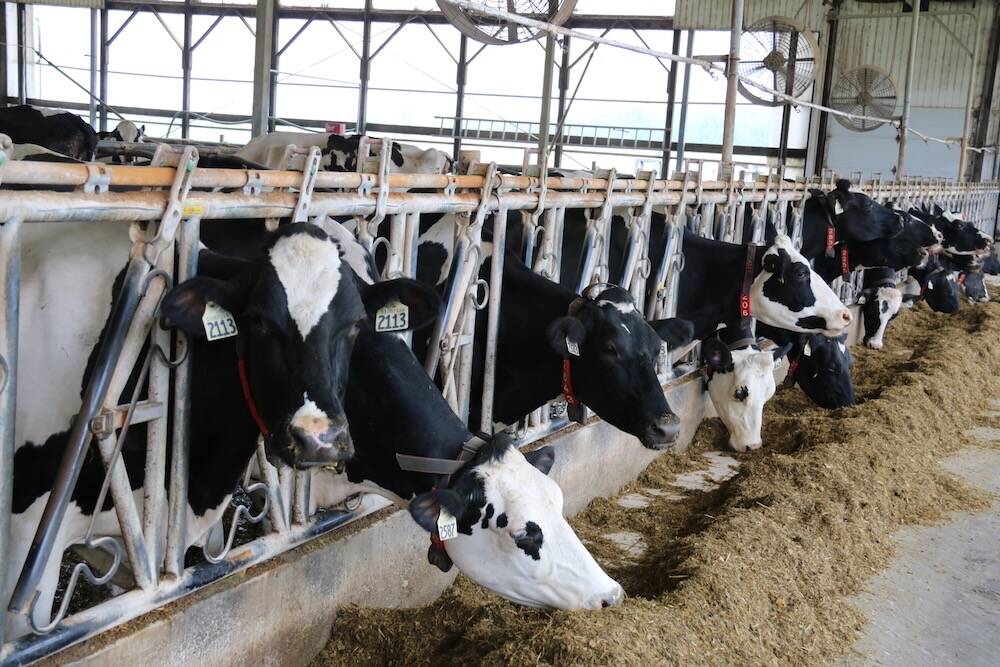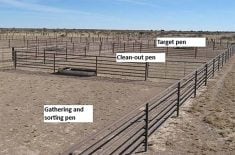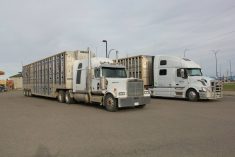Glacier FarmMedia – The Canadian Food Inspection Agency is investigating a bovine tuberculosis infection in a dairy cow from a farm in the Pembina Valley region of south-central Manitoba.
Due to CFIA privacy laws, that’s about as much as Manitoba Beef Producers president Matthew Atkinson knows about the case.
However, he would still like the operation impacted by the incident — as well as any who may have such a problem in the future, be they beef or dairy operations — to reach out to the dairy industry or MBP for help, including the communication of compensation details if necessary.
Read Also

Government, industry seek canola tariff resolution
Governments and industry continue to discuss how best to deal with Chinese tariffs on Canadian agricultural products, particularly canola.
“The hardships that they are going through can’t be shared with us. We don’t know what’s going on and so we can’t provide support unless somebody reaches out and asks for that support, but we are here as that resource to help them through that.”
Labs found the bacteria responsible for the disease June 9 in samples taken from a seven-year-old cow at a federally registered abattoir in the province, according to a CFIA news release. The finding was confirmed June 13 and the CFIA released a notice to industry June 16.
The processor was later confirmed as the True North Foods plant at Carman, Man., by the company’s chief executive officer Calvin Vaags.
The CFIA said the originating farm was identified using DairyTrace, Canada’s national traceability program for the dairy industry. The herd has been quarantined pending “further testing and depopulation,” said the agency.
Atkinson said he sympathizes with any farmer whose operation has been quarantined, especially if there’s a possibility of depopulation due to a disease that requires reporting to the CFIA.
“The livestock on our farms are a lot more than livestock or a tool to make a living from,” he said.
“It’s unimaginable the mental toll of having to see herds depopulated as well as the loss of all those years worth of bloodlines on those herds and good breeding.”
Better compensation
On June 18 the Government of Canada announced increases to its maximum compensation amounts for cattle that are ordered destroyed.
An amendment to the Compensation for Destroyed Animals and Things Regulations increased the rates by up to $16,500 per head for registered (purebred) cattle (up $10,000 from the previous rate set in 2015) and up to $10,000 per head for commercial cattle (up from $4,500).
“It is important to note that the actual amount of compensation to be paid to an owner or producer is calculated based on the current market value of the animal,” wrote the CFIA in an email.
Bovine TB incidents handled quickly
Although Canada is considered free of the disease, isolated cases in cattle may — and have — transpired, federal officials say.
That disease-free status doesn’t change with this incident because the infection was quickly acted on, says Atkinson.
“They all get a clean bill of health before anything’s moving. So that’s really the great length that the CFIA goes to ensure that the rest of us maintain that TB-free status.”
The incident is a case study in the fact that CFIA inspections work, said Atkinson.
“(They) found it at point of slaughter and that’s a good thing to know.”
The CFIA will be tracing the movement of animals to and from the farm in the past five years so that testing can be arranged, read an email from the CFIA.
Can lie dormant for years
Bovine tuberculosis can be tricky. According to the agency, the bacteria can lie dormant in an infected animal for years without causing clinical signs or progressive symptoms. However, it can reactivate in older animals or during periods of stress in younger ones.
Initial signs of the disease include enlarged lesions found in animal tissue, including lymph nodes on the head and thorax, lungs, spleen and liver.
When progressive disease occurs, the general signs include weakness, loss of appetite, weight loss and fluctuating fever. Extensively diseased, lungs there can result in an intermittent, hacking cough.
Atkinson says the disease is challenging to detect on-farm, especially in its early stages.
“It’s often something that doesn’t show much for symptoms.”
Movement between herds a critical vector
The disease is spread among animals by a number of means, says the CFIA. They shed the bacteria in respiratory secretions and aerosols, feces, milk and sometimes in urine, vaginal secretions or semen.
Other animals can contract the disease by inhaling micro-droplets in aerosols from already-infected animals and the ingestion of contaminated food and water.
Moving cattle from one herd to another with subsequent extended close contact increases transmission risk, writes the CFIA.
“In addition, where infected wildlife are a reservoir of disease, there is the potential for ongoing transmission to livestock.”
Trade action doubtful, but vigilance recommended
Atkinson doesn’t think the incident will affect trade either internationally or interprovincially thanks to quick action on the part of the agency.
“We are currently addressing and eradicating anything that is there and so that’s really part of the reasoning why we need to make sure that those folks get really fairly looked after and compensated, because realistically, they go through an awful lot of hardship that allows the rest of us to maintain (that) trade status.”
Trade and bovine tuberculosis
Andre Steppler is a purebred cattle producer from Miami, Man., in the western Pembina Valley.
He’s a little more vigilant on the possibility of trade disruption considering the tempestuous political climate between Canada and the U.S., despite the fact U.S. cattle producers struggle with TB as well.
“In this climate that we have with our politics now we don’t want to give any excuse to shut a border. And when it comes to disease it’s a pretty justifiable excuse to shut a border if there’s a disease risk.
“I’m not saying we have a disease risk here with TB, but it opens the door for some conversations.”
Something Steppler finds odd is how a cow could have contracted TB in the Pembina Valley in the first place considering the area’s relatively light wildlife pressure compared to other Manitoba regions.
Areas around Riding Mountain National Park in Manitoba’s northwest were the more typical area for the disease, historically.
Wildlife testing in the late ’90s and early ’00s found cases in the region’s wild elk. The wild vector led the CFIA to establish the Riding Mountain TB Eradication Area around the park, which came with additional scrutiny and requirements for farmers moving cattle in and out of the zone.
The Pembina Valley doesn’t exactly have a thriving elk population.
“We’re predominantly a grain land type area, so we don’t see elk herds like people do in other parts of the province or Canada. I feel that we are a little bit less at risk because of that,” Steppler said.
The fact it occurred in a dairy herd opens up more questions, he says.
“With it being a dairy herd where there’s more control (over) those animals where they just don’t have as much chance to run … They just don’t have the same exposure to wildlife as maybe a beef operation would.”
The elk population is mushrooming in Western Canada, says Steppler, and he’s frustrated by what he sees as a reluctance on the part of the government to survey the wild animals and find out how many there are.
Complicating matters is the fact dairy cows and elk can get along quite well.
“The elk will actually hang out with cows if the cows will allow it. So there is that cross-contamination of feed sources or nose-to-nose contact with the cows themselves.”
Spread to humans rare, but possible
The CFIA describes bovine TB as a chronic, contagious bacterial livestock disease. It’s occasionally found in other mammalian species infected with the Mycobacterium bovis (M. bovis) bacteria.
Despite its cross-infection potential, human cases of bovine TB in Canada are very rare.
However, the agency says exposure can still occur by the passage of fluids to open skin sores, extended close contact with animals infected with active respiratory TB, or consuming raw or unpasteurized animal products — such as unpasteurized milk — from an infected animal.
Owners and handlers of infected cattle may be at elevated risk. The CFIA recommends anyone exposed to an infected animal seek medical advice. Bovine TB — which presents itself in humans similarly to human TB — can be treated successfully with antimicrobial drugs. Untreated infections have the potential to be fatal.
“Currently the risk to the general population in Canada is very low due to pasteurization of milk and livestock surveillance and testing programs,” wrote the CFIA.


















